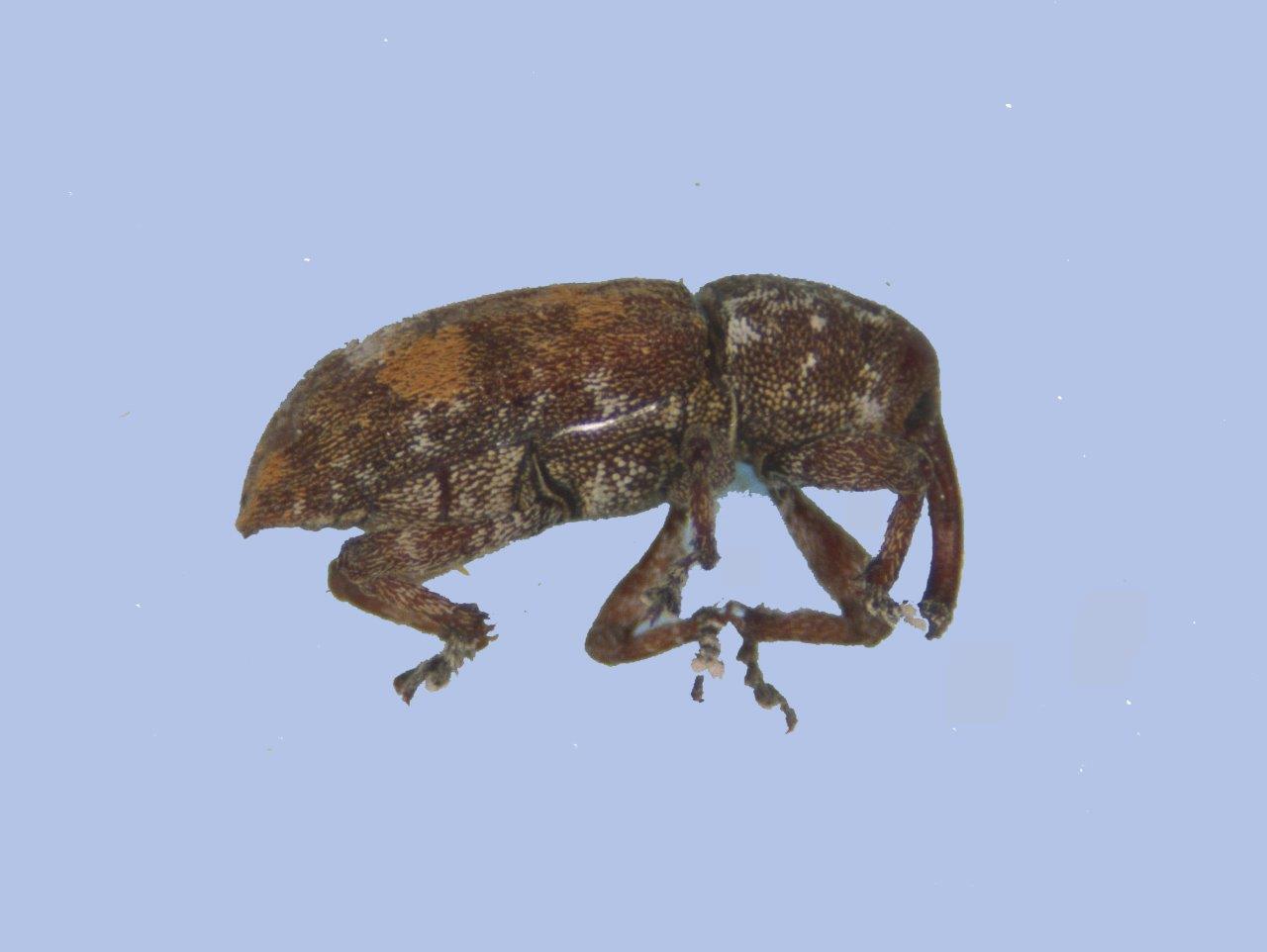White Pine Weevil
|
|
Coleoptera: Curculionidae Hosts: White pine, Norway spruce, other spruce and pine species, Douglas fir Evidence: On sunny days in early spring, look for adults (a) near terminal buds. Pitch flow from feeding and egg-laying punctures is common in the leaders of infested trees (b). Tops may be stunted, drooping or dead by mid-summer (c). Dead terminals sometimes take on the appearance of a shepherd's crook. Two or more whorls can be afffected and occasionally smaller trees may be killed. Life Cycle: Adults overwinter in the duff under infested trees. They emerge in very early spring to begin feeding and egg-laying in last year's terminal shoot. Upon hatching, larvae tunnel downward beneath the bark, girdling the leader (d). Pupation takes place in the oval chip-lined cells beneath the bark in the feeding channel. Adults emerge in July and August and drop to the ground. Management: Flagged terminals should be pruned out below the larval tunnels and destroyed as soon as they are seen. When infestations are heavy, treatment of terminals in early spring with a residual insecticide can eliminate adults as they are feeding, but before they begin ovipositing. |
Photo Credits:
Figure a: E. Bradford Walker, Vermont Department of Forests, Parks and Recreation, Waterbury, VT.
Figure b: E. Bradford Walker, Vermont Department of Forests, Parks and Recreation, Waterbury, VT.
Figure c: E. Bradford Walker, Vermont Department of Forests, Parks and Recreation, Waterbury, VT.
Figure d: Ronald S. Kelley, Vermont Department of Forests, Parks and Recreation, Morrisville, VT.
References:
Drooz, A.T. 1985. Insects of Eastern Forests. USDA Forest Service Miscellaneous Publication 1426. p 328-329;
Johnson, W.T. and Lyon, H.H. 1991. Insects That Feed on Trees and Shrubs. 2nd edition. Cornell University Press. p 54-55;
Martineau, R. 1984. Insects Harmful to Forest Trees. Agriculture Canada Government Publishing Centre, Supply and Services, Ottawa. p 61-63;
Rose, A.H. and Lindquist, O.H. 1999. Insects of Eastern Pines. Canadian Forest Service Publication 1313. p 25-27.






